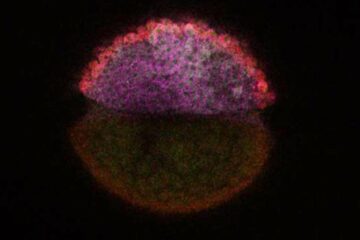Stop looking for parking spaces: magnetic field sensor can recognize vehicles

They have developed easy-to-install magnetic field sensors. Unoccupied parking lot locations can be presented on a display. This monitor system has been applied at airports and it can also be used for improving city traffic guidance, so traffic jams before traffic lights will be reduced.
Researchers will demonstrate application possibilities from 19 to 23 April at Hannover Messe at Saarland Research stand (Hall 2, Stand C44).
Each vehicle slightly deforms its surrounding earth's magnetic field due to its metallic components and electronic devices. Magnetic field sensors can detect these small changes. Uwe Hartmann, Professor of Experimental Physics, Saarland University, explains: “These sensors are very sensitive and they can also recognize vehicles at a large distance. In contrast to surveillance cameras, which are influenced by fog or rain, magnetic field sensors are unaffected by weather conditions.” One sensor plus necessary electronics is also comparatively cheap and its power consumption is low, so magnetic field sensors can be used in systems to monitor large areas.
In parking garages or on large surfaces in front of shopping malls, magnetic field sensors can precisely recognize locations of unoccupied parking lots. Large displays present the information to customers and there are still places for advertisements on displays. “Also traffic flow can be monitored by these sensors. They can be integrated into traffic light systems, because they can easily identify the vehicle speed”, Hartmann says. The researcher sees an additional application in shipping. In this case, magnetic field sensors recognize whether a ship passes the door of a large sluice or not.
In a pilot project, on-road tests of magnetic field sensors have been carried out at Frankfurt, Saarbrücken-Ensheim and Thessaloniki airports. Hartmann warns, “Every year there are several hundred real or near accidents at airports worldwide, due to collisions of aircrafts with other aircrafts or ground vehicles.” Magnetic field sensors will prevent those aircrafts from moving too close on their ways to taxiways. “Especially for areas between buildings, where ground radars are not effective or even impossible to achieve, magnetic field sensors can be equipped,” the Saarbrücken physicist explains.
In the research project together with Fraport at Frankfurt airport, various applications of magnetic field sensors to maintain safety have been investigated. In this area, further development is still needed before market launch.
Corresponding person:
Prof. Dr. Uwe Hartmann
Chair for Nanostructure Research and Nanotechnology
Saarland University
Tel. +49 (0)681 / 302 3799
Tel. +49 (0)511 / 89 497101 (telephone in stand)
E-Mail: u.hartmann@mx.uni-saarland.de
Information for radio journalists: You can make telephone interviews in studio quality with researchers at Saarland University by using radio-ISDN-codec. Please directly contact the press office +49 (0)681/302-3601 for your interview wish.
Media Contact
All latest news from the category: Information Technology
Here you can find a summary of innovations in the fields of information and data processing and up-to-date developments on IT equipment and hardware.
This area covers topics such as IT services, IT architectures, IT management and telecommunications.
Newest articles

Attosecond core-level spectroscopy reveals real-time molecular dynamics
Chemical reactions are complex mechanisms. Many different dynamical processes are involved, affecting both the electrons and the nucleus of the present atoms. Very often the strongly coupled electron and nuclear…

Columbia researchers “unzip” 2D materials with lasers
The new technique can modify the nanostructure of bulk and 2D crystals without a cleanroom or expensive etching equipment. In a new paper published on May 1 in the journal…

Decoding development: mRNA’s role in embryo formation
A new study at Hebrew University reveals insights into mRNA regulation during embryonic development. The study combines single-cell RNA-Seq and metabolic labeling in zebrafish embryos, distinguishing between newly-transcribed and pre-existing…





















